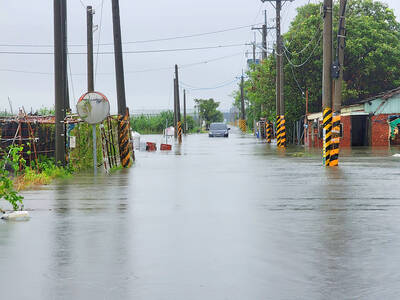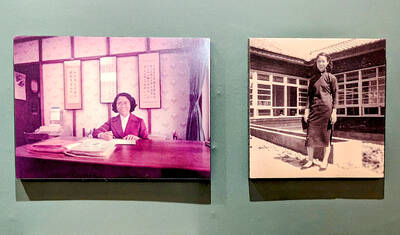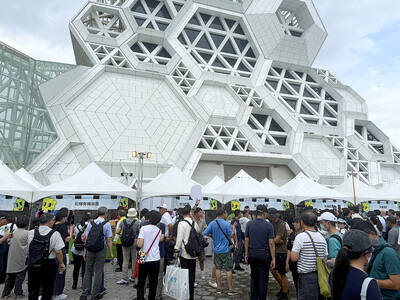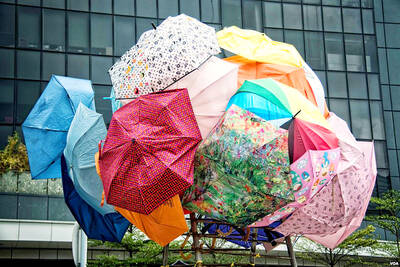While nightclubs in the early 1990s could get by with featuring strobe lights pulsating with the beat, organizers of today's nightclub events have to offer more to attract clubgoers.
Alongside the disc jockeys — DJs — are so-called visual jockeys — VJs — and together they shape the image of the club. Like their sound colleagues, VJs fashion the mood, atmosphere and tact of the lights from track to track. In major cities across the world they have formed their own small scene.
Organizations representing VJs, such as those in Hamburg and Berlin, agree that an evening of electronic music in a club can’t be pulled off without a VJ.
“It was simply the next step. Pictures were modified to sound and over time it became more compositional,” said Olaf Kretschmar of the Club Commission Berlin.
Club visuals were brought to a new level of sophistication at a wild techno festival in Berlin after the fall of the Berlin Wall. Previously, light shows were commonly integrated into rock concerts, but in the electronic music genre, the light effects have a special meaning. Andrea Rothaug, who is with a Hamburg club, said the visuals are largely tied in with dancing.
In Germany there are a handful of VJs active in Cologne, Frankfurt and Munich and an international association has been formed. As in the past, however, the biggest location for Germany’s wild techno night life is Berlin.
VJ Tobias Last started there about five years ago. The 28-year-old, who calls himself Kiritan Flux, studied digital media. He has learned the ropes of the software used to create the visual effects and also has made films. Like other VJs, he has put together his own VJ programs. It’s important to him that the images do not look like a story told in a movie.
“People should be dancing, not standing still,” said Last. Aside from that he said it’s not about producing as much as possible ahead of time and simply pulling it off the laptop. Since it is technically possible by using two DVD players, the images can be scratchy, just like the music.
Tasso Treis of Cologne last year helped create the visuals for the closing event of the Love Parade in Essen, Germany. Treis explained that geometric forms such as circles are used in minimal techno, while pictures that help create a mood go with abstract music. If the track contains meditation or relaxation sounds, Treis tries to reproduce that visually.
He said only VJs and DJs who are well coordinated are able to create such moments of synchronicity. Bastian Fritz, who works as an events organizer for the Tape Club, emphasized the point.
“The DJ and the VJ must fit together. Then something new can develop and you can give a good event even better emphasis,” he said.

Water management is one of the most powerful forces shaping modern Taiwan’s landscapes and politics. Many of Taiwan’s township and county boundaries are defined by watersheds. The current course of the mighty Jhuoshuei River (濁水溪) was largely established by Japanese embankment building during the 1918-1923 period. Taoyuan is dotted with ponds constructed by settlers from China during the Qing period. Countless local civic actions have been driven by opposition to water projects. Last week something like 2,600mm of rain fell on southern Taiwan in seven days, peaking at over 2,800mm in Duona (多納) in Kaohsiung’s Maolin District (茂林), according to

Aug. 11 to Aug. 17 Those who never heard of architect Hsiu Tse-lan (修澤蘭) must have seen her work — on the reverse of the NT$100 bill is the Yangmingshan Zhongshan Hall (陽明山中山樓). Then-president Chiang Kai-shek (蔣介石) reportedly hand-picked her for the job and gave her just 13 months to complete it in time for the centennial of Republic of China founder Sun Yat-sen’s birth on Nov. 12, 1966. Another landmark project is Garden City (花園新城) in New Taipei City’s Sindian District (新店) — Taiwan’s first mountainside planned community, which Hsiu initiated in 1968. She was involved in every stage, from selecting

The latest edition of the Japan-Taiwan Fruit Festival took place in Kaohsiung on July 26 and 27. During the weekend, the dockside in front of the iconic Music Center was full of food stalls, and a stage welcomed performers. After the French-themed festival earlier in the summer, this is another example of Kaohsiung’s efforts to make the city more international. The event was originally initiated by the Japan-Taiwan Exchange Association in 2022. The goal was “to commemorate [the association’s] 50th anniversary and further strengthen the longstanding friendship between Japan and Taiwan,” says Kaohsiung Director-General of International Affairs Chang Yen-ching (張硯卿). “The first two editions

It was Christmas Eve 2024 and 19-year-old Chloe Cheung was lying in bed at home in Leeds when she found out the Chinese authorities had put a bounty on her head. As she scrolled through Instagram looking at festive songs, a stream of messages from old school friends started coming into her phone. Look at the news, they told her. Media outlets across east Asia were reporting that Cheung, who had just finished her A-levels, had been declared a threat to national security by officials in Hong Kong. There was an offer of HK$1m (NT$3.81 million) to anyone who could assist